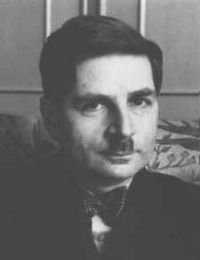Walter H. Schottky facts for kids
Quick facts for kids
Walter H. Schottky
|
|
|---|---|
 |
|
| Born | 23 July 1886 |
| Died | March 4, 1976 (aged 89) Pretzfeld, West Germany
|
| Nationality | German |
| Alma mater | University of Berlin |
| Known for | Schottky diode Schottky effect Schottky barrier Schottky defect Schottky anomaly Schottky–Mott rule Mott–Schottky equation Mott–Schottky plot Band bending Screen-grid vacuum tube Ribbon microphone Ribbon loudspeaker Theory of field emission Shot noise Solid state ionics Time-symmetric interpretations of quantum mechanics |
| Awards | Hughes medal (1936) Werner von Siemens Ring (1964) |
| Scientific career | |
| Fields | Physicist |
| Institutions | University of Jena University of Würzburg University of Rostock Siemens Research Laboratories |
| Thesis | Zur relativtheoretischen Energetik und Dynamik (1912) |
| Doctoral advisor | Max Planck Heinrich Rubens |
| Notable students | Werner Hartmann |
Walter Hans Schottky (born July 23, 1886 – died March 4, 1976) was a German physicist. He made very important discoveries about how electrons and ions are released from materials. He also invented the screen-grid vacuum tube in 1915. Later, he helped create the ribbon microphone and ribbon loudspeaker in 1924. Schottky also made big contributions to the field of semiconductor devices and other areas of physics and technology.
Contents
Early Life and Education
Walter Schottky was born in Zürich, Switzerland. His father, Friedrich Hermann Schottky, was a famous mathematician. Walter had one sister and one brother. When Walter was six, his family moved back to Germany.
He finished high school in Berlin in 1904. Then, he studied physics at the University of Berlin, earning his bachelor's degree in 1908. He continued his studies at the Humboldt University of Berlin, where he earned his PhD in physics in 1912. His teachers were important scientists like Max Planck and Heinrich Rubens. His PhD paper was about energy and motion in the theory of relativity.
Career Journey
After getting his PhD, Schottky worked at the University of Jena from 1912 to 1914. He then taught at the University of Würzburg from 1919 to 1923. From 1923 to 1927, he was a professor of theoretical physics at the University of Rostock.
Schottky spent a large part of his career working at the Siemens Research Laboratories. He worked there from 1914 to 1919 and again from 1927 until he retired in 1958.
Cool Inventions
In 1915, while working at Siemens, Walter Schottky invented the screen-grid vacuum tube. This invention was a big step forward for electronics.
In 1924, Schottky worked with Erwin Gerlach to invent the ribbon microphone. They had the idea that a very thin ribbon, placed in a magnetic field, could create electrical signals when sound waves hit it. This invention led to the creation of the ribbon loudspeaker. However, these loudspeakers only became practical later, when stronger permanent magnets were invented.
Key Scientific Discoveries
Walter Schottky made many important discoveries in physics. His work helped us understand how electrons behave in metals and semiconductors.
- The Schottky Effect: In 1914, Schottky explained why more electrons are released from a heated metal surface when an electric field is applied. This is called the "Schottky effect." It's like pulling electrons out of the metal more easily with an extra push.
- Schottky Barriers: He also described what happens when a metal touches a semiconductor. A special barrier forms at this connection, which is now called a Schottky barrier. This barrier controls how electrons flow between the metal and the semiconductor.
- Schottky Diodes: Because of these barriers, metal-semiconductor connections can act like a special kind of electronic switch called a Schottky diode. These diodes are very useful in modern electronics, like in computers and cell phones, because they can switch on and off very quickly.
Schottky's ideas about surfaces and how electrons move through them are now a basic part of understanding many electronic devices.
Awards and Recognition
Walter Schottky received several important awards for his scientific work:
- In 1936, he was given the Royal Society's Hughes medal. This was for his discovery of the "Schrot effect" (also known as shot noise), which explains tiny, random changes in electric current. It was also for his invention of the screen-grid tube and a special way to receive radio signals called the superheterodyne method.
- In 1964, he received the Werner von Siemens Ring. This award honored his amazing work in understanding physics, which led to many important inventions like tube amplifiers and semiconductors.
Schottky's Legacy
Walter Schottky's work continues to be important today. The Walter Schottky Institute for semiconductor research is named after him. There is also a science award called the Walter Schottky Prize, which recognizes new achievements in physics.
Books by Walter Schottky
- Thermodynamik (Thermodynamics), published in 1929.
- Physik der Glühelektroden (Physics of Hot Electrodes), published in 1928.
See also
 In Spanish: Walter H. Schottky para niños
In Spanish: Walter H. Schottky para niños
- Schottky transistor
- Schottky junction solar cell
- Surface-barrier transistor

